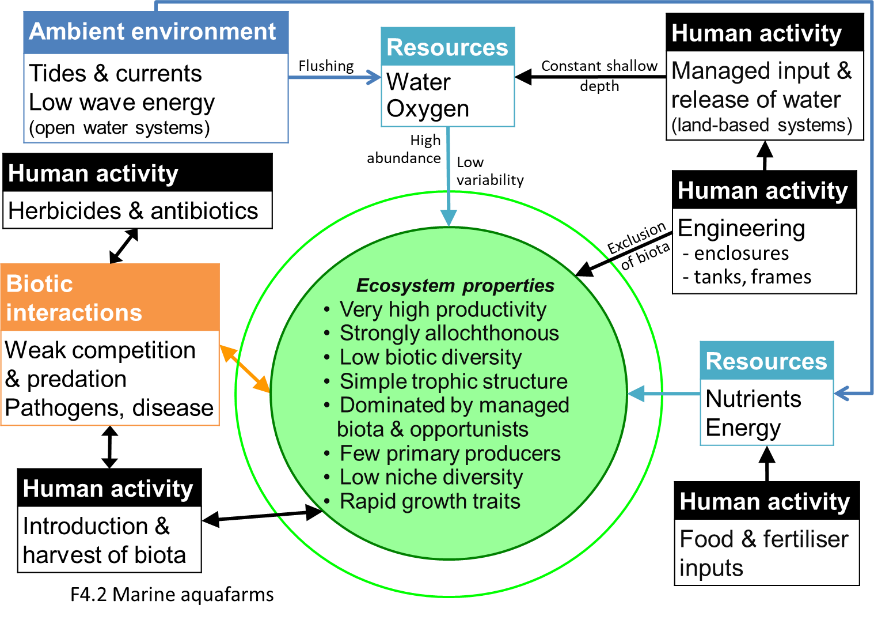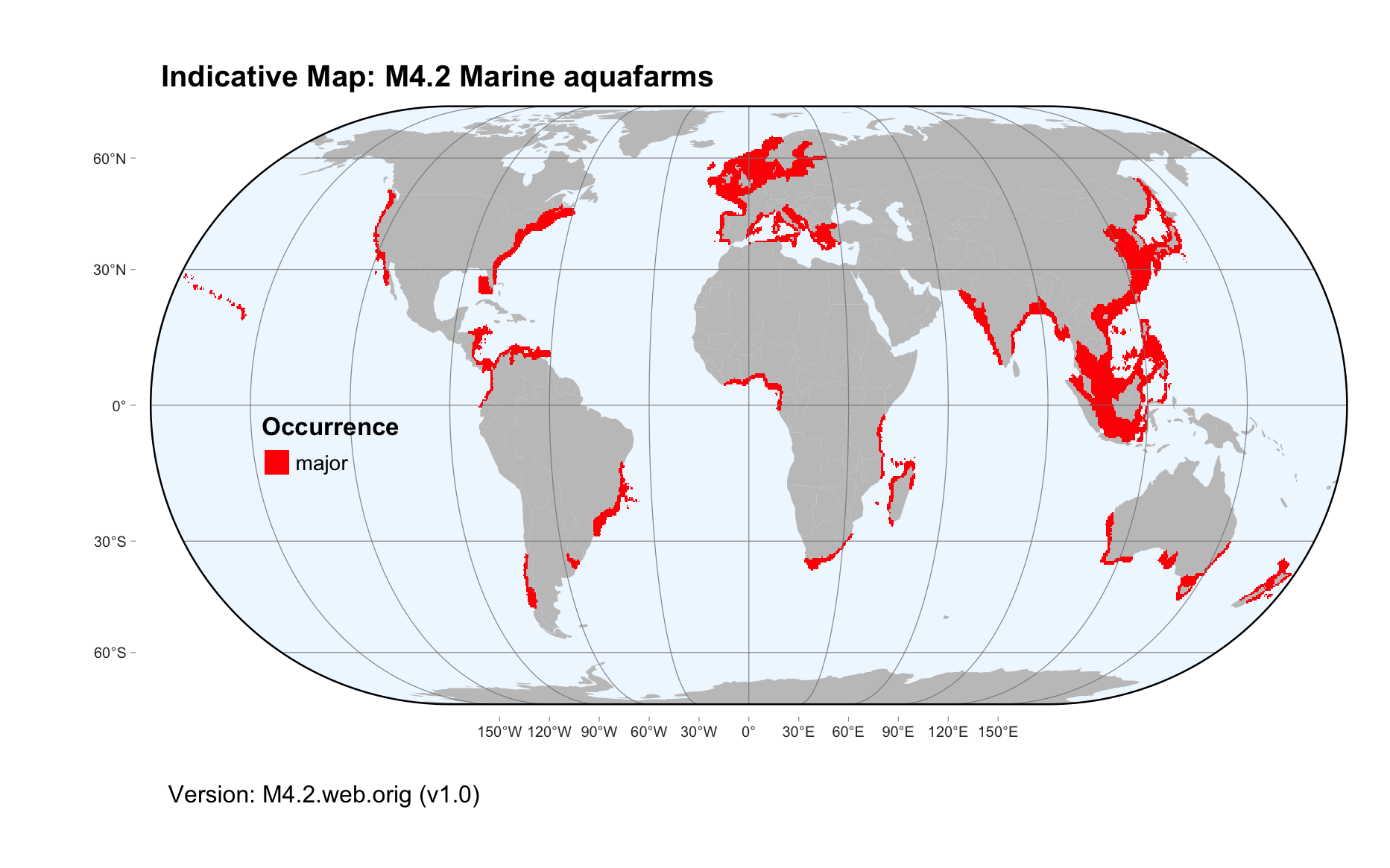Global ecosystem typology
Alternative site for the Global ecosystem typology with additional information for ecosystem profiles and indicative maps.
This site is maintained by jrfep
M4.2 Marine aquafarms
Biome: M4. Anthropogenic marine biome
Contributors:
(texts)
High-productivity marine aquafarms are enclosed areas for the breeding, rearing, and harvesting of marine plants and animals, including finfish like salmon, molluscs, crustaceans, and algae. These low-diversity communities are dominated by the harvested species, maintained at a high densities. Non-harvested species may be controlled as pests, using antibiotics, herbicides, or culling. Aquafarms in coastal or open ocean waters are exposed to associated physical processes, but on land they are in environmentally controlled tanks and ponds.
Key Features
High density, productive, enclosed systems with variable permeability, for breeding and harvesting marine species. Allochthonous nutrients from human sources is common..
Overview of distribution
Largely coastal or shore-based, some open-ocean facilities.
Profile versions
- v1.0 (2020-01-20): DA Keith
- v2.0 (2020-05-28): DA Keith; M Beveridge; LB Firth
- v2.01 ():
- v2.1 (2022-04-06): DA Keith; M Beveridge; LB Firth Full profile available at official site
Main references
Selected references for this functional group:
Beveridge M (2008) Cage Aquaculture Wiley, Oxford DOI:10.1002/9780470995761
Froehlich HE, Smith A, Gentry RR, Halpern BS (2017) Offshore aquaculture: I know it when I see it Frontiers in Marine Science 4, 154.
Diagrammatic assembly model

Maps
Maps are indicative of global distribution patterns are not intended to represent fine-scale patterns. The maps show areas of the world containing major (coloured red) or minor occurrences (coloured yellow) of each ecosystem functional group. See general notes on maps.
There are 2 alternative versions of the indicative map for this functional group, please compare description and sources below.
M4.2.IM.orig_v1.0
Datasets
- GSFM-2014
- Marine-aquaculture-list
- MEOW-2008
Map references
Harris PT, Macmillan-Lawler M, Rupp J, Baker EK (2014) Geomorphology of the oceans. Marine Geology 352: 4-24. 10.1016/j.margeo.2014.01.011
Gentry RR, Froehlich HE, Grimm D, Kareiva P, Parke M, Rust M, Gaines SD, Halpern BS (2017) Mapping the global potential for marine aquaculture Nature Ecology & Evolution 1: 1317–1324 DOI:10.1038/s41559-017-0257-9
Spalding MD, Fox HE, Allen GR, Davidson N, Ferdaña ZA, Finlayson M, Halpern BS, Jorge MA, Lombana A, Lourie SA, Martin KD, McManus E, Molnar J, Recchia CA, Robertson J (2007) Marine ecoregions of the world: a bioregionalization of coastal and shelf areas. Bioscience 57: 573–583. DOI:10.1641/B570707
M4.2.web.orig_v1.0

Datasets
- Marine-aquaculture-list
- GSFM-2014
- MEOW-2008
Map references
Gentry RR, Froehlich HE, Grimm D, Kareiva P, Parke M, Rust M, Gaines SD, Halpern BS (2017) Mapping the global potential for marine aquaculture Nature Ecology & Evolution 1: 1317–1324 DOI:10.1038/s41559-017-0257-9
Harris PT, Macmillan-Lawler M, Rupp J, Baker EK (2014) Geomorphology of the oceans. Marine Geology 352: 4-24. 10.1016/j.margeo.2014.01.011
Spalding MD, Fox HE, Allen GR, Davidson N, Ferdaña ZA, Finlayson M, Halpern BS, Jorge MA, Lombana A, Lourie SA, Martin KD, McManus E, Molnar J, Recchia CA, Robertson J (2007) Marine ecoregions of the world: a bioregionalization of coastal and shelf areas. Bioscience 57: 573–583. DOI:10.1641/B570707
Check: the Glossary / Profile structure / the public document